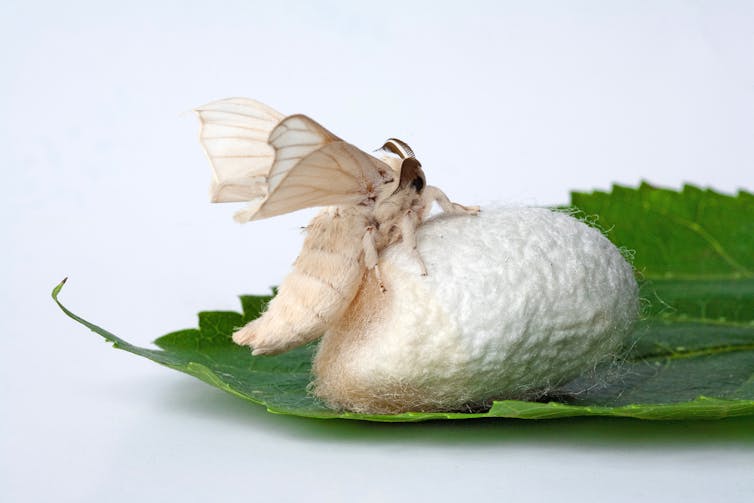Robert Kubinec, University of South Carolina
The fall of Bashar Assad’s dictatorship in December 2024 has ushered in a nerve-wracking time of hope and fear for Syrians concerning future governance in the long-war-torn country.
While it’s unclear what exact political path Syria will take, the dilemmas the country faces are similar to the experiences of other Arab countries more than a decade ago. In the winter of 2010, an outbreak of protests in Tunisia spread across the region, toppling several regimes in what became known as the Arab Uprisings.
While some countries – Egypt and Tunisia – became democracies, albeit briefly, others, like Yemen, Libya and Syria, descended into violence.
In the intervening years, political science scholars from across the world have examined these political transformations, looking at why so many of Arab Uprising countries failed to continue down the path of democratic reform. As a political scientist with expertise in the region, I have distilled this research into five key lessons that could help guide Syria now, as it seeks to build a stable and democratic state.
1. Islamist politicians are politicians first, Islamists second
One of the most pressing questions when considering Syria’s post-Assad political direction is the role played by Hayat Tahrir al-Sham, the rebel group that led the overthrow of Assad.
Hayat Tahrir al-Sham is a former al-Qaida affiliate that has since backed away from extremist ideology – though there are worries that this moderation is temporary. While some observers may think that all Islamist groups want to rigidly enforce a narrow interpretation of Islamic law like the Taliban in Afghanistan, research shows a far wider range of possibilities for the policies Islamist groups implement while in office.
For example, the Tunisian Islamist group Ennahda stalwartly defended democracy and helped write a liberal constitution after the country ousted Zine El Abidine Ben Ali in 2011. Similarly, in Egypt after strongman leader Hosni Mubarak was removed the same year, the Muslim Brotherhood, a once-banned Islamist movement, competed successfully and fairly in the democratic process, though, of course, it faced the same challenges of any governing party in implementing policies once in power.
But nor is such a path predetermined. Turkey’s recent democratic backslide and embrace of authoritarianism shows that Islamist politicians like President Recep Tayyip Erdogan can also undermine democracy when it serves their interests.
What political science research has turned up time and again is that Islamist politicians are like politicians everywhere: When they need to win elections, they will gravitate toward voter concerns. According to regional survey data, a majority of Arabs express a preference for religious leaders who are apolitical.
If Syria becomes a democracy, Hayat Tahrir al-Sham will, I believe, likely have to continue to embrace moderation. But whether the group backs democracy depends on the organization’s calculation of what its future looks like in democracy versus more authoritarian forms of governance. Broad negotiations that involve all parties in Syria can help convince Hayat Tahrir al-Sham that continuing on a path of moderation is in their best interests. While no one can forecast with certainty what Syria’s new institutions will look like, research shows that Islamists are just as likely as secular parties to support democratic norms.
2. Ending corruption is all important
One of the drivers of the Arab Spring and the Syrian revolution was anger over corrupt business deals. Indeed, relatives and cronies of Assad owned de facto monopolies over lucrative industries like cellphone networks. Unwinding these corrupt legacies and opening industries to competition and licensing should be an overriding priority for those seeking a less autocratic future.
In Tunisia, established businesses fought anti-corruption reforms because they said it would hurt investment and growth. But the reason that economic growth is so poor in many parts of the Middle East is precisely due to these entrenched companies.
Syria’s diaspora has many capable businesspeople who can return and found innovative companies if the new government opens up investment and entrepreneurship beyond people with political connections.
3. Political disagreement is OK
Many hope that Syria’s new government will be freely and fairly elected. For democracy to work, though, it must successfully implement changes in response to voters’ concerns.
Initially, Syria will need to decide on basic rules like a constitution, which will involve many diverse groups. This broad coalition may have an easier time reaching compromises because of the opposition’s shared experiences under the prior dictatorship. Trying to maintain this unity, however, can mask important political debates that need to occur.
In order for voters to see change, electoral competition must yield actual policy change. In Tunisia, top-heavy coalitions of parties promoted unity instead of tackling difficult decisions that resonated with people’s daily concerns. Over time, voters stopped identifying with parties and lost confidence in elections. Tunisia’s elected president, Kais Saied, took advantage of this apathy to shut down the country’s parliament – an action that was broadly popular despite the loss of democracy.
A practical response to this concern is to build strong parties, a cause that pro-democracy organizations like the National Democratic Institute are very good at. Effective parties help voters by putting together a package of policies that will get through parliament and building coalitions.
While Syria’s opposition has a lot of experience with waging war, it has relatively little in the way of running campaigns and building strong party brands. These more mundane goals are the key connective tissue that makes democracy work.
4. Bureaucracies should serve the public
Elections choose leaders, but lasting, popular change also requires bureaucrats who implement new policies – what is known as “horizontal accountability.” Egypt’s post-2011 democratic government left many state institutions untouched and later faced a revolt from autonomous anti-democratic agencies. Meanwhile, in Sudan, which saw a brief interlude of liberalization after the ouster of its longtime dictator, Omar al-Bashir, in 2019, democratic reformers launched an ambitious overhaul of state institutions that still failed because bureaucrats lobbied politicians for support.
Without cooperative bureaucrats, basic state services fail, which leads to phenomena like crime waves and a loss of confidence in democracy.
The Hayat Tahrir al-Sham-led government in Syria has already started reforming bureaucracies by prosecuting high-ranking officials from the prior regime while retaining the rank and file. Effective oversight, though, requires participation of elected leaders with the legitimacy to demand accountability from bureaucrats. For those who want to be involved in Syria’s transition, providing technical assistance to quickly rebuild ministries is one way to increase the odds of a successful transition.
5. Keep the military close
If Syria’s new government collapses, history suggests the military will be the most likely culprit. Egypt’s military undermined the country’s democratic transition by covertly supporting the anti-Islamist opposition. Sudan’s military acquiesced to protester demands for new leadership but kept de facto control of important government institutions.
Recent research shows that keeping the military in check means giving it a stake in democracy by funding needed items like salaries and equipment. Just as important, however, is establishing civilian control over the military by mandating that the military report to elected leaders about its budgets, policies, and deployments. Military aid is necessary, yes, but still must be tied to strict commitments to civilian control.
The future is Syria’s
Political transitions are too complex to embark on easy forecasts. But the experience of nations who saw democracy rise and fall in the Arab Spring and subsequent winter can help Syria’s new leaders avoid costly political mistakes.
Ultimately, though, the fate of the country rests with its own people. They are the ones who survived Assad’s regime – and who will make the most important decisions for Syria’s future.
Robert Kubinec, Assistant Professor of Political Science, University of South Carolina
This article is republished from The Conversation under a Creative Commons license. Read the original article.































































